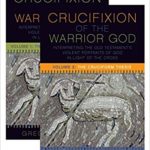We run our website the way we wished the whole internet worked: we provide high quality original content with no ads. We are funded solely by your direct support. Please consider supporting this project.

Should Innovative Theology Be Rejected?
In some conservative Christian circles innovation is suspect, if not sin. And as a result, theologians and pastors who take this stance often criticize what I propose in my writings simply because it’s innovative. However, I would like to suggest that the attitude that would dismiss hermeneutical or theological proposals simply on the grounds that they include novelty is itself a very non-traditional perspective. While the Church has always affirmed that the core doctrines of the orthodox faith have been “entrusted to us…once for all” (Jude 3), and while theologians have always understood that new proposals must be critically scrutinized in the light of Scripture, tradition and experience, the Church has never closed the door to novel ways of interpreting Scripture or resolving theological or interpretive conundrums.
Church interpreters from the start took their interpretive cues from the creative practices of the NT, but they regarded this only as their starting point from which they developed further understanding that would eventually become standard components of Christian imagination, vocabulary and liturgy. The traditional openness to Spirit-inspired innovation received its clearest formal expression in the Reformation maxim, “ecclesia reformata, semper reformanda.” (“The church reformed is always reforming.”) This maxim presumes not only that the Spirit continues to work in and through the Church in new and creative ways but that the Church needs the Spirit to so work and that the Church needs to retain a humble, open posture to allow him to so work.
In this light, I would argue that, not only should we not dismiss out of court proposed interpretive strategies simply because they’re novel, but we ought to be concerned with any individual or group that adopts a knee-jerk anti-innovation attitude. The authority of tradition must of course always be given its due weight, and it is formidable. But the conservative resistance to novelty in hermeneutics or theology frankly reflects an unorthodox if not idolatrous presumption that one’s group is already in possession of all truth and is thus no longer in need of the Spirit to reform them.
The conservative resistance to novelty is especially inappropriate, I believe, with respect to proposals that attempt to help us better discern how Scripture bears witness to Christ. After all, it was only because the earliest disciples and post-apostolic fathers were open to the Spirit giving them new insights and inspiring highly creative interpretive strategies that they were able to find Christ in surprising ways and “in unexpected places” in the OT. Indeed, it was only because of this that the early church was able to continue to affirm that the Hebrew Bible was also their Bible. On the other hand, it was largely because Marcion refused to embrace creative interpretive strategies that he was led to the conclusion that the OT is incompatible with the Christian faith. And it was precisely because the modern historical-critical approach to Scripture methodologically ruled out hermeneutical innovation that it undermined the OT as a witness to Christ and sabotaged its use in the church.
Hence, while I argue that theological interpretations should, as a matter of principle, stick as close as possible to the original meaning of passages—a conviction I label “the conservative hermeneutical principle”—and while I believe that interpretive strategies that go beyond or against traditional hermeneutical practices certainly shoulder the burden of proof, I also contend that, when it comes to discerning how difficult passages bear witness to Christ, there is no justifiable reason to rule out any particular proposed interpretive strategy simply because it is innovative.
Image by Rakka via Flickr.
Category: General
Tags: Approaches to Theology, Bible Interpretation, Cruciform Theology
Topics: Biblical Interpretation
Related Reading

Podcast: Would a Loving God Create a Box that Killed Anyone Who Touched It?
Greg discusses the Ark of the Covenant and it’s strange and violent nature. http://traffic.libsyn.com/askgregboyd/Episode_0266.mp3

Reviewing the Reviews: Tom Belt (Part 1)
Tom Belt has written a four-part review of Crucifixion of the Warrior God on his blog An Open Orthodoxy. Parts 1 and 2 offer an overall fair and balanced summary of CWG, at least to the point that correcting misunderstandings would feel petty. In Part 3 Tom offers a critique of volume I, and this is what I’d like…

Can Good Theology Be Innovative?
For many in conservative Christian circles innovation in theology and biblical interpretation is viewed as suspect, if not sinful. To this I would simply respond by pointing out that the attitude that would dismiss hermeneutical or theological proposals (like those offered in The Crucifixion of the Warrior God) simply on the grounds that they include…

Divine Accommodation and the Cross: where Calvin was onto something
Over the last few posts, I’ve been arguing that the cross represents the thematic center of everything Jesus was about. Hence, rather than striving to have a “Christocentric” theology — which is so broad it means next to nothing—we ought to sharpen our focus by striving for a “cruciform” theology. I then offered some suggestions…

Reading the Bible “by Faith”
The cruciform approach to reading the Bible—and specifically the culturally-conditioned and sin-stained portraits of God—requires faith on the part of the reader, which I argue in Crucifixion of the Warrior God. On one level we can discern by faith that often times God broke through the limitations and sin of the ancient authors, for we…

The Reformers and the Centrality of Christ
The Christocentric nature of the Church’s hermeneutic approached a zenith in the Protestant Reformation. While Luther and Calvin rejected allegorical interpretation, in theory if not in practice, they nevertheless relied on typology and other creative hermeneutical strategies to discern how Christ was the subject matter of the OT. For Luther, Jesus was “the Word” in…
